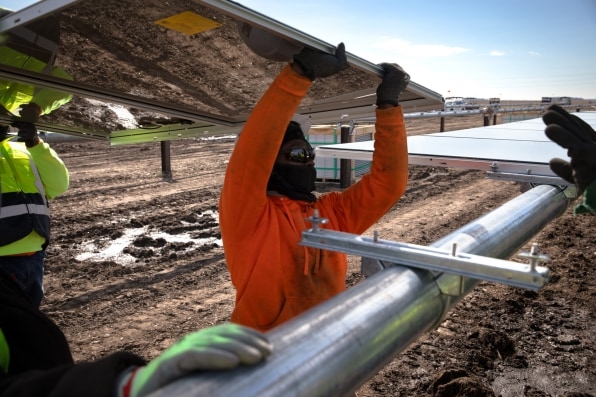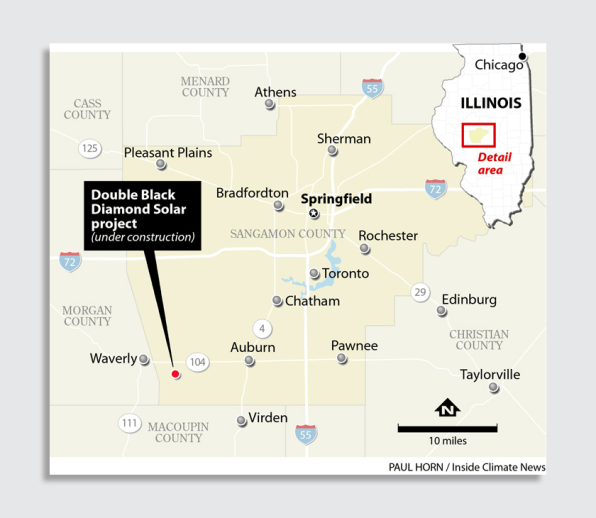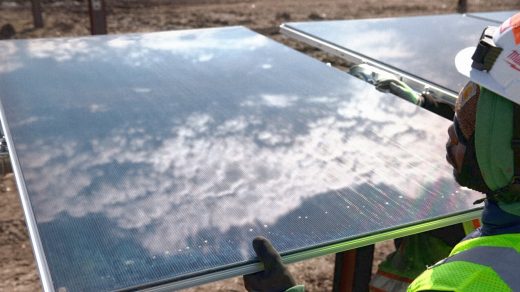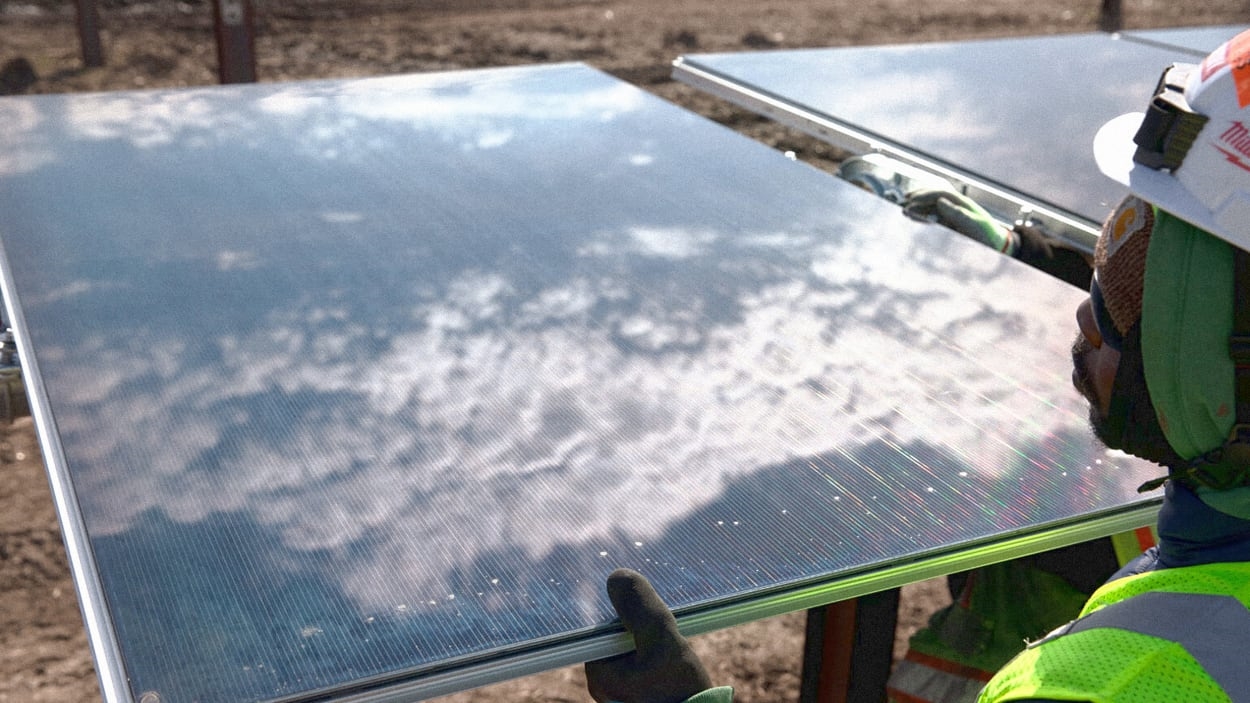Why one of the country’s largest solar arrays is being built in Illinois
By Dan Gearino—Inside Climate News
This article originally appeared on Inside Climate News. It is republished with permission. Sign up for the newsletter here.
The largest solar arrays operating in the United States are located in the kinds of sunny states you would expect—five in California, four in Texas, and one in Arizona.
But a project that began construction last month in Illinois is going to be about as large or larger than all of them.
The 593-megawatt Double Black Diamond Solar farm near Springfield is indicative of several trends in solar power, as projects grow ever larger and are built in places that get much less sun than the southwest.
The developer, Swift Current Energy of Boston, is building the project to meet demand from corporations and local governments aiming to meet clean energy goals.

Among the buyers is the Chicago city government, which has said that the project will provide most of the electricity used by municipal properties, including some giant power users like O’Hare and Midway airports and two water purification plants.
Chicago’s involvement with the project is tied to the city’s goal, adopted by former Mayor Rahm Emmanuel and affirmed by the current mayor, Lori Lightfoot, to use 100% renewable electricity in city buildings by 2025.
But the city doesn’t have a contract with the project itself. Instead, Chicago has a deal with Constellation Energy to supply the city with 100% renewable energy. The Baltimore-based company sells electricity and natural gas contracts in states—like Illinois—that allow customers to choose their supplier for those resources.

Constellation will obtain 70% of Chicago’s total from Double Black Diamond, once the project finishes construction in 2024. The rest could be renewable energy from anywhere, although city officials have said they would like to have much of it come from projects in the Chicago area.
“I am as excited as anybody to see shovels in the ground, so to speak, this spring,” said Jared Policicchio, Chicago’s deputy chief sustainability officer, about the solar project.
“We are hoping that we can demonstrate to other public agencies and, frankly, private organizations in the region, that you can cost effectively continue to spur the quick development of this critical industry,” he said.
The city’s electricity contract is helping to support the solar project while still paying electricity rates that are competitive, Policicchio added.
Double Black Diamond has customers in addition to Chicago. State Farm, the insurance company, and PPG, the paint manufacturer, have signed up to buy power from the project.
The largest operational U.S. solar project by capacity is Topaz Solar Farm in San Luis Obispo County on the Central Coast of California, with 586 megawatts, according to the Solar Energy Industries Association, which also provided the list of the top 10 projects I referred to above.
Double Black Diamond has slightly more capacity, with 593 megawatts, but it’s smaller than Topaz in acres. Double Black Diamond covers about 4,100 acres, while Topaz is about 4,700 acres. Let’s just say both of them are really big and they have about the same capacity. (I should also mention Copper Mountain Solar in Nevada, which has more than 800 megawatts, built over a decade in five phases; some observers say this is the largest operational project, while others count the phases as separate projects.)
The ever-increasing sizes of solar projects mean that several of the others in development are going to be larger than Topaz and Double Black Diamond. The research firm Wood Mackenzie says Double Black Diamond ranks at least eighth in capacity of projects that are in some phase of development but not yet operational.
Among the challenges wind and utility-scale solar projects in Illinois have faced is opposition from local residents who view the developments as ugly, and a lack of enough transmission lines to deliver the electricity.
Double Black Diamond was able to navigate both challenges. It got approval in 2021 from the county government that hosts the project, despite testimony from some neighbors opposing it.
Also, the project had the benefit of being close to a relatively new transmission line that had capacity available, the Illinois Rivers project built by the utility Ameren.
Double Black Diamond also got a boost from clean energy policies, including the Chicago 2025 target and several state laws that encourage wind and solar development. A 2021 state law, the Climate and Equitable Jobs Act, is one of the reasons that the project is required to be built with workers making union wages and meet standards for diversity in hiring.
If there are going to be more projects of this magnitude in Illinois, another law is going to play a role: the federal Inflation Reduction Act. This climate and clean energy law from 2022 passed too recently to have much of an effect on Double Black Diamond, but it is likely to have a huge effect on the clean energy economy going forward.
I asked Eric Lammers, CEO of Swift Current Energy, what the IRA means for his company and industry.
“The IRA has caused investment in renewable energy to accelerate,” he said in an email. “At Swift Current, we’re particularly excited about provisions in the IRA that increase investment in clean energy manufacturing and in communities that have historically contributed to America’s energy independence.”
(23)



